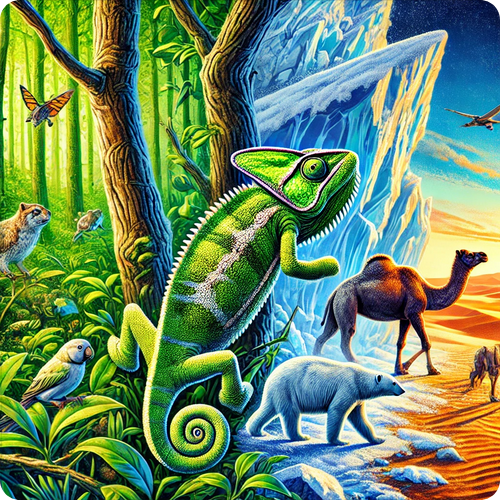The natural world is filled with extraordinary examples of adaptation, showcasing how animals evolve to survive in diverse environments. From the icy tundras to the scorching deserts, wildlife has developed remarkable features and behaviors to thrive.
Mastering the Cold
In the Arctic, polar bears are the epitome of adaptation to extreme cold. Their thick fur and insulating fat layers help them endure freezing temperatures. Penguins, on the other hand, huddle together in large groups to conserve heat during harsh Antarctic winters. These adaptations ensure survival in some of the planet’s harshest conditions.
Surviving the Heat
Desert animals face the challenge of extreme heat and scarce water. Camels store fat in their humps, which provides energy and hydration over long distances. Fennec foxes, with their large ears, dissipate heat and detect prey. Such adaptations highlight nature’s ingenuity in helping animals conquer arid climates.
Camouflage and Mimicry
Camouflage is a vital survival tactic in the animal kingdom. Chameleons adjust their skin color to blend into their surroundings, while leaf-tailed geckos look like dried leaves to avoid predators. This ability to disappear into the environment ensures both safety and the element of surprise.

Extreme Resilience
Some animals demonstrate adaptations that defy imagination. The tardigrade, also known as the “water bear,” can survive extreme temperatures, radiation, and even the vacuum of space. These microscopic creatures epitomize resilience and adaptability.
Coexistence with Humans
Urban wildlife has adapted to thrive in human-dominated landscapes. Pigeons navigate cities with ease, raccoons exploit human waste for food, and foxes have learned to coexist in suburban areas. These examples illustrate how animals can adapt to the ever-changing world shaped by human activity.
Wildlife adaptations reveal the incredible creativity of evolution. By understanding these marvels, we gain a deeper appreciation for the diversity of life on Earth and our responsibility to protect it.